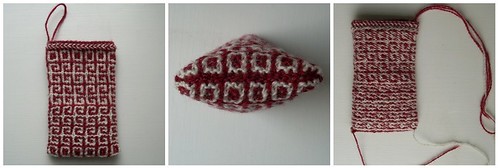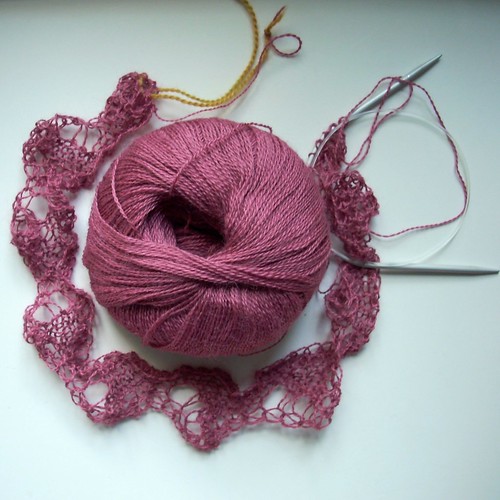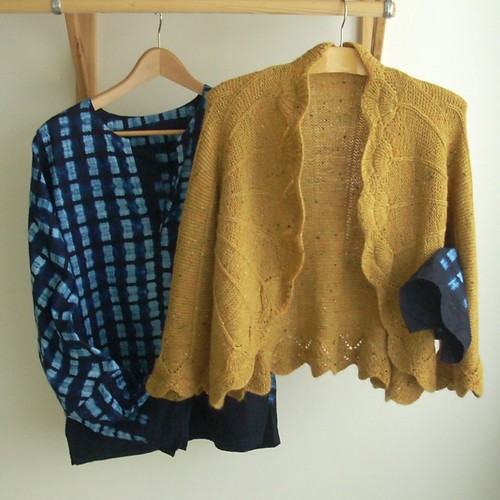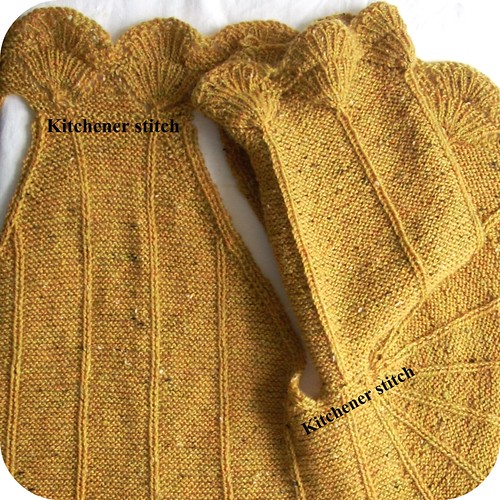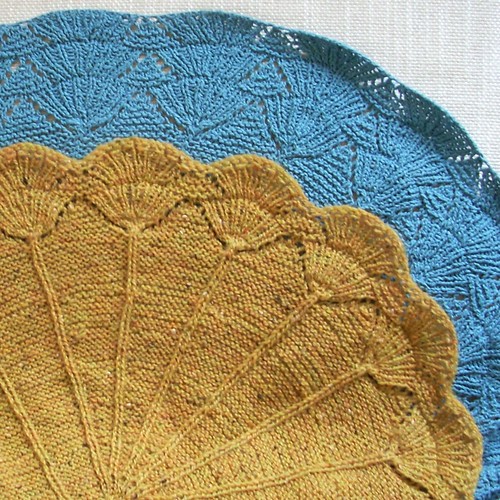The other day I saw super knitter Tålamodspåsen's phone case and thought I'd make one for myself to test a couple of pattern ideas for twined knitting.
For easy comparison I like having different versions of the same idea in a swatch, in this case a pattern with knit stitches and then with both knit and purl stitches. Not only do they look and feel slightly different, the one with purls is thicker too.
Twined knitting with two colours looks a bit like mosaic knitting, but there are major differences. In mosaic knitting you knit with one colour at a time and slip stitches to make a pattern; in twined knitting you knit with both colours and cover stitches with the strand you don't knit with to make a pattern. I haven't knitted much mosaic knitting, but it seems to me it tends to curve (depending on the pattern) in a way twined knitting doesn't. Not that it's a bad thing necessarily - I can see how it could be an effect you'd want to achieve.
 |
| All the twisting makes it necessary to unwind the two strands every now and then. Having just one ball of yarn makes it easier: you just let it hang in the air. |
Edited to add: how I wish I could draw like Mattias!
